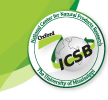Document Type
Oral Presentation
Location
Oxford Convention Center, 102 Ed Perry Boulevard Oxford, MS 38655
Event Website
https://oxfordicsb.org/
Start Date
18-4-2024 1:00 PM
End Date
18-4-2024 2:30 PM
Description
Mushrooms have a long tradition of use as medicinal and functional ingredients however the lack of development in testing methods currently limits our ability to characterize these products. Selecting the right strain or processing method is currently challenging given the lack of commercially available analytical methods to detect or quantify secondary metabolites with therapeutic endpoints. Very little is known about the variability of these metabolites between strains of the same species and between identical strains grown in different conditions therefore an untargeted analytical method was needed to adequately assess impact of strain genetics and growing methods for M2 Ingredients cultures of Hericium erinaceus and Cordyceps militaris. To guide decision making in strain selection & processing method optimization, an untargeted metabolomics profiling was performed on strains of Hericium erinaceus and Cordyceps militaris using a Quadrupole TOF mass spectrometer and the Mona, NIST and SCIEX Mass Libraries. The untargeted approach allowed for the identification of bioactive secondary metabolites in each samples and a comparative quantification of these metabolites served to support strain, growing, and processing method selection. In addition, we obtained unexpected matches with molecules that had not been previously reported in the each species. A comparative analysis of the know bioactive secondary metabolites associated with each set of samples was used to select strains and processing methods for both Hericium erinaceus and Cordyceps militaris. The selected strains and methods were then tested in cell-based assays to assess their bioactivity. Two cell-based assays were used; a cellular antioxidant protection (CAP-e) assay to assess antioxidant potential and a cell based mitochondrial function assay. In both cases, the metabolomics profiling led to the selection of products that had significant biological activity.
Recommended Citation
Daoust, Julie, "Metabolite profiling of functional fungi strains of Hericium erinaceus & Cordyceps militaris: using phenotypes, untargeted metabolomics by mass spectrometry and cell-based assays" (2024). Oxford ICSB. 31.
https://egrove.olemiss.edu/icsb/2024_ICSB/Schedule/31
Publication Date
April 2024
Accessibility Status
Searchable text
Included in
Metabolite profiling of functional fungi strains of Hericium erinaceus & Cordyceps militaris: using phenotypes, untargeted metabolomics by mass spectrometry and cell-based assays
Oxford Convention Center, 102 Ed Perry Boulevard Oxford, MS 38655
Mushrooms have a long tradition of use as medicinal and functional ingredients however the lack of development in testing methods currently limits our ability to characterize these products. Selecting the right strain or processing method is currently challenging given the lack of commercially available analytical methods to detect or quantify secondary metabolites with therapeutic endpoints. Very little is known about the variability of these metabolites between strains of the same species and between identical strains grown in different conditions therefore an untargeted analytical method was needed to adequately assess impact of strain genetics and growing methods for M2 Ingredients cultures of Hericium erinaceus and Cordyceps militaris. To guide decision making in strain selection & processing method optimization, an untargeted metabolomics profiling was performed on strains of Hericium erinaceus and Cordyceps militaris using a Quadrupole TOF mass spectrometer and the Mona, NIST and SCIEX Mass Libraries. The untargeted approach allowed for the identification of bioactive secondary metabolites in each samples and a comparative quantification of these metabolites served to support strain, growing, and processing method selection. In addition, we obtained unexpected matches with molecules that had not been previously reported in the each species. A comparative analysis of the know bioactive secondary metabolites associated with each set of samples was used to select strains and processing methods for both Hericium erinaceus and Cordyceps militaris. The selected strains and methods were then tested in cell-based assays to assess their bioactivity. Two cell-based assays were used; a cellular antioxidant protection (CAP-e) assay to assess antioxidant potential and a cell based mitochondrial function assay. In both cases, the metabolomics profiling led to the selection of products that had significant biological activity.
https://egrove.olemiss.edu/icsb/2024_ICSB/Schedule/31



Comments
We would like to thank Dr. Gitte Jensen and the Natural Immune Systems (NIS) labs for conducting some of the cell-based assays. We would also like to thank Dr. John Fagan at the Health Research Institute (HRI) for conducting the metabolomics work.